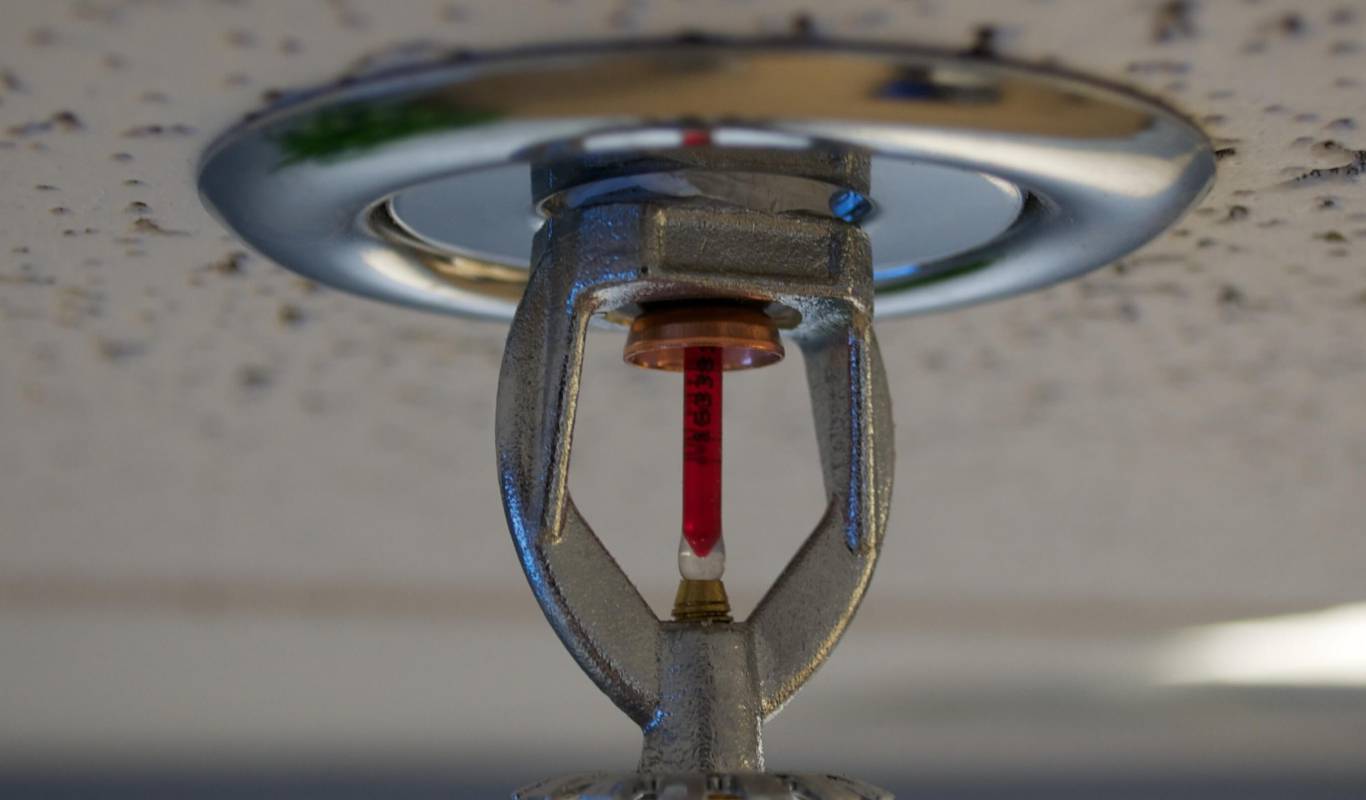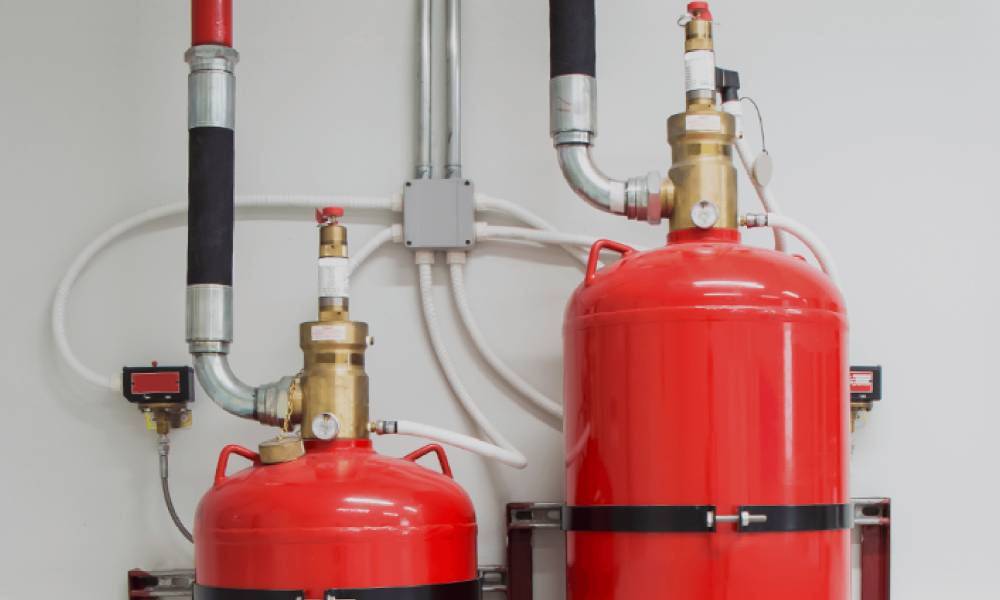Table of Contents

A fire suppression system is the most essential part of protecting infrastructures from fire risks. An automatic fire suppression system is designed to put out the fire by emitting extinguishing agents such as chemical compounds, foam, or water.
This blog post explains what an automatic fire suppression system is, how it works, its benefits, and how it is important for your building’s and personal safety.
What is Automatic Fire Suppression?
The automatic fire suppression system is designed to extinguish or suppress a fire without relying on people’s intervention. Humans don’t need to get involved in the dangerous fire protection process with the invention of a fully automatic fire suppression system. This system detects the fire within seconds of the fire occurring and delivers the fire-suppressing agents into the fire.
Before the invention of fire suppression systems, the fire protection system depended totally on human involvement, which is associated with many risks. Someone must be able to step in physically to suppress the fire, which is impossible in many applications, such as wind turbines, power generation, and other industrial applications. Moreover, the person should be trained and competent and understand the fire stages and the suppression process.
All such risks can be mitigated by installing an automatic fire suppression system. It is placed in or around the fire-risk areas and will detect and suppress the fire even in the hardest-to-reach locations.
Electrical Safety Certificates
24Hr Emergency Electricians
Our team of emergency response electricians are on call 24/7
Fair Price
Our pricing structure is transparent and affordable. We offering great value for money
Types of Automatic Fire Suppression Systems
There are broadly five types of automatic fire suppression systems, having different benefits and properties.
Wet Chemical Foam Fire Suppression System
The wet chemical foam systems are specifically designed to cope with kitchen fires. As soon as they detect fire, they emit a chemical foam directly into the heart of the fire. They are usually activated by either a heat link (a wire that breaks when subjected to heat) or a manual switch.
Gas System
Gas fire suppression systems have fire-control liquids, which contain nitrogen. When the system detects the heat, the liquids quickly release a chemical named FM200 to suppress the flames immediately. Since the gas system doesn’t use water, they are perfect for the rooms having electrical equipment. The system is easy to store and transport, as the gaseous agent is stored in compact cylinders in the form of condensed liquid.
Pneumatic Heat Detection Tubes
These heat detection tubes are very similar to fire extinguishers and are considered the most compact fire suppression systems. Pneumatic tubes have two main components: a valve and a pipe. The pipe is wrapped around the fire source; when it reaches the specified temperature limit, it emits a fire-suppressing chemical through the valve onto the flames.
Water Mist Fire Suppression System
Water mist fire systems are designed for spaces where water cannot be sprayed in large amounts. They sprinkle smaller droplets on the affected area, which creates a steam layer that quickly lowers the temperature.
Foam Deluge Fire Suppression System
Foam deluge systems are commonly used in industrial warehouses, refineries, and aircraft hangers, as they have the potential to safeguard areas having flammable liquids effectively. Fire in such areas can spread exceedingly quickly, so this system is designed for quick fire widespread applications.

contact us now
if you need Any Assistance
We’re available to look after your electrical emergency 24h a day.
Working of Automatic Fire Suppression System
Automatic fire suppression systems have different components which work in the following ways:
Detection
All automatic fire suppression systems have some sort of detection element. This element aims to identify the fire before it starts working. They rely on detecting smoke, heat, or any other fire indicator and then send a signal to the system to take action.
Actuation
Once the fire is detected, the automatic fire suppression system has an automatic trigger that brings the system into action. For instance, if there is a tubing fire suppression system that will burst on reaching a certain temperature, activating the mechanical reactions to bring delivery.
Delivery
Lastly, the system takes action and emits fire-suppressing agents actively. Different types of fire control systems are available depending on different types of fire, some are traditional sprinklers, and some use dry chemicals.
Benefits of Automatic Fire Suppression System
There are many benefits of having an automatic fire suppression system:
- It will assure you that you and your belongings are protected. An automatic fire suppression system will take work immediately, and you won’t have to wait for the fire suppression team to come and extinguish the fire.
- These systems control the fire before it causes significant damage to your property. It will minimise financial loss by keeping your goods safe from replacement or repair.
- If a fire breaks out, it will indicate automatically and allows you to get away and stay safe from the affected area.
- The system also helps you get help from the fire brigade as it notifies them upon activation.

Where are Automatic Fire Suppression Systems Commonly Used in Industries?
Although every industry uses automatic fire suppression systems for a safer environment and to reduce any kind of loss, some departments have a specific requirement for an automatic fire suppression system.
Server Centres and Data Rooms
Fires and electricity supply issues mainly cause data centre outages. Both server rooms and data centres have a large amount of highly temperature-sensitive electronic equipment. Therefore, an automatic fire suppression system is crucial to install.
Manufacturing and Industrial Plant
The industrial and manufacturing sector is highly susceptible to fire, containing large amounts of fire-capturing raw materials. So, to ensure your personal safety and property’s loss, installing an automatic fire suppression system is compulsory in the industrial setting.
Warehouse
A warehouse is usually full of large amounts of flammable goods, making an automatic fire suppression system a critical requirement.
Frequently Asked Questions (FAQs)
What Gases are Used in an Automatic Fire Suppression System?
Different automatic fire suppression systems use different kinds of gases. Some of the most commonly used gases are:
- Halon
- Inert gases: nitrogen and argon gases
- Carbon dioxide
- Other chemical agents: FK-5-1-12 and HFC-277ea
Can You Install an Automatic Fire Suppression System Yourself?
Installing an automatic fire suppression system yourself is not recommended; always get it done by a fire system professional. The process is complicated and requires special expertise involving the installation of cylinders containing suppression agents and setting nozzles through a series of fittings and pipes.
How Often Does an Automatic Fire Suppression System Needs Inspection?
The NFPA recommends having an automatic fire suppression system inspection by a qualified technician twice a year.
What is the Best Type of Automatic Fire Suppression System?
The best type is the pressurised gas system, the most effective way to suppress fire in large buildings and industries. They work by cooling the fuel source, displacing oxygen with carbon dioxide and nitrogen.
Last Words
Fire suppression systems significantly increase your home, business, and any other property’s fire safety and reduce the risk of damages caused by fire. We hope this blog post gave you basic knowledge of automatic fire suppression systems, their purpose, importance, and function.
